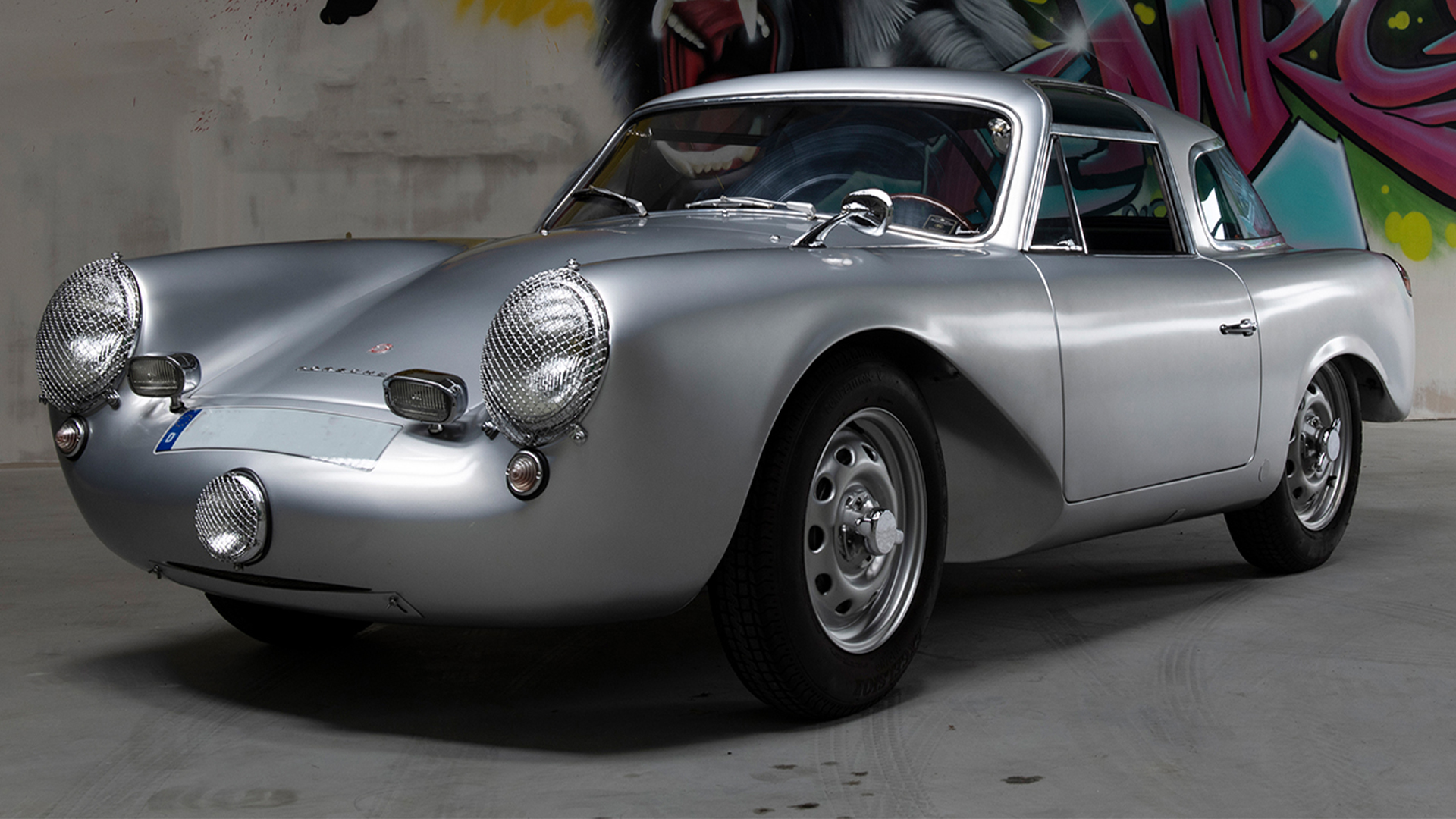

It’s absolutely incredible how fast the automotive industry has changed. Porsche, for example, won’t celebrate its centennial for another 10 years, yet the German car maker has evolved from building the 356, a 35-horsepower air-cooled classic which topped out at 83 miles per hour, to the modern day 911, which can sustain driving at 186 miles per hour for nearly 17 hours straight.
While Porsche was busy perfecting its new sports cars, early auto enthusiasts were already picking up the platform to create dedicated racers. Walter Glöckler was a prime example, and his passion for Porsches led to a number of race cars based on the 356, one of which became the inspiration for James Dean’s “Little Bastard,” and another the unofficial predecessor to the Carrera. Now, Glöckler’s one-off coupe is headed to auction where it will almost certainly become the centerpiece to a Porsche fanatic’s collection.

Glöckler had always been a man interested in speed, especially before World War II when he focused on becoming an accomplished amateur motorcycle racer. He later took up the business of selling cars—first Volkswagens, and then eventually becoming the very first dealer for Porsche after the iconic 356 came to life. Glöckler’s dealership allowed him to return to his pre-war interest of motorsports. He would tag in his mechanic and engineer, Hermann Ramelow, to help build cars worthy of bearing his family name. This would lead to a run of seven hand-built race cars under Walter’s watchful eye, six of which were Porsches.
By the third Glöckler special, Porsche’s interest was piqued. The German automaker would go on to use the fifth car, the Glöckler-Porsche 1500 Super, as inspiration for the 550 Spyder.
The very last car to sport the dealer’s marque was the 1954 Glöckler-Porsche 356 Carrera 1500 Coupe. The car started as an all-original 1954 356 “Pre-A.” Despite the vehicle being serialized upon leaving the factory, the 356’s Kardex (which is akin to a Porsche-supplied warranty card) leaves the chassis number blank which was common for cars designated for special coachworking. Warranty be damned, because the car wouldn’t need any sort of factory guarantee—it was destined to be torn apart and sent to compete in the 1954 Mille Miglia.

Rather than go roofless like many race cars of the era, Glöckler decided to go against the norm and instead build the car as a coupe. Ramelow built the car’s chassis whereas C.H. Weidenhausen, the Frankfurt-based coachbuilder who would go on to body the first two Porsche 550 RS Prototypes, hand-formed the 356’s aluminum skin.
The 356’s body was completely reshaped. Any factory sharpness along the front was rounded into smooth and flowing corners; meanwhile, the rear was shaped into two large era-appropriate tailfins that gave a significantly wider appearance. The car’s cockpit was opened up with windows, providing an almost panoramic view of the surroundings, and roof cutouts allowed for a driver with a helmet to enter and exit the car with relative ease.



Meanwhile, under the hood the was the most important change. Gone was the Pre-A’s 1,068cc, 35-hp engine in favor of a new revolutionary vertical shaft engine packing 110 horsepower. The lump had originally been designed for the 550 Spyder by Porsche engineer Ernst Fuhrmann. The 1.5-liter four-cam flat-four would later be known as Porsche’s key to building a reputation in racing.
According to the auction listing, the coupe’s original engine has since been replaced with another Type 547 plucked from Porsche 550 Spyder, of which just 96 examples were produced specifically for the 550 Spyder. The engine was completely overhauled by Swiss Porsche wizard, Armin Baumann, and the bodywork was repaired by Ulrich Weinberg of Zetel, Germany.

Sadly, the coupe never made it to Mille Miglia. It simply wasn’t finished in time, so instead the car made its debut at the Liège–Rome–Liège road rally piloted by Walter’s cousin and 24 Hours of Le Mans driver, Helm Glöckler. The car faced an early retirement thanks to oil supply problems and spent some time at Porsche’s Zuffenhausen factory before being exported to the U.S. later in 1954. Walter Glöckler’s sixth and final Porsche creation would change hands several times before undergoing its most recent restoration.
The coupe is set to be sold off next month in Monterey, California, and is expected by RM Sotheby’s to fetch between $750,000 and $1 million.
Got a tip or question for the author? Contact them directly: rob@thedrive.com